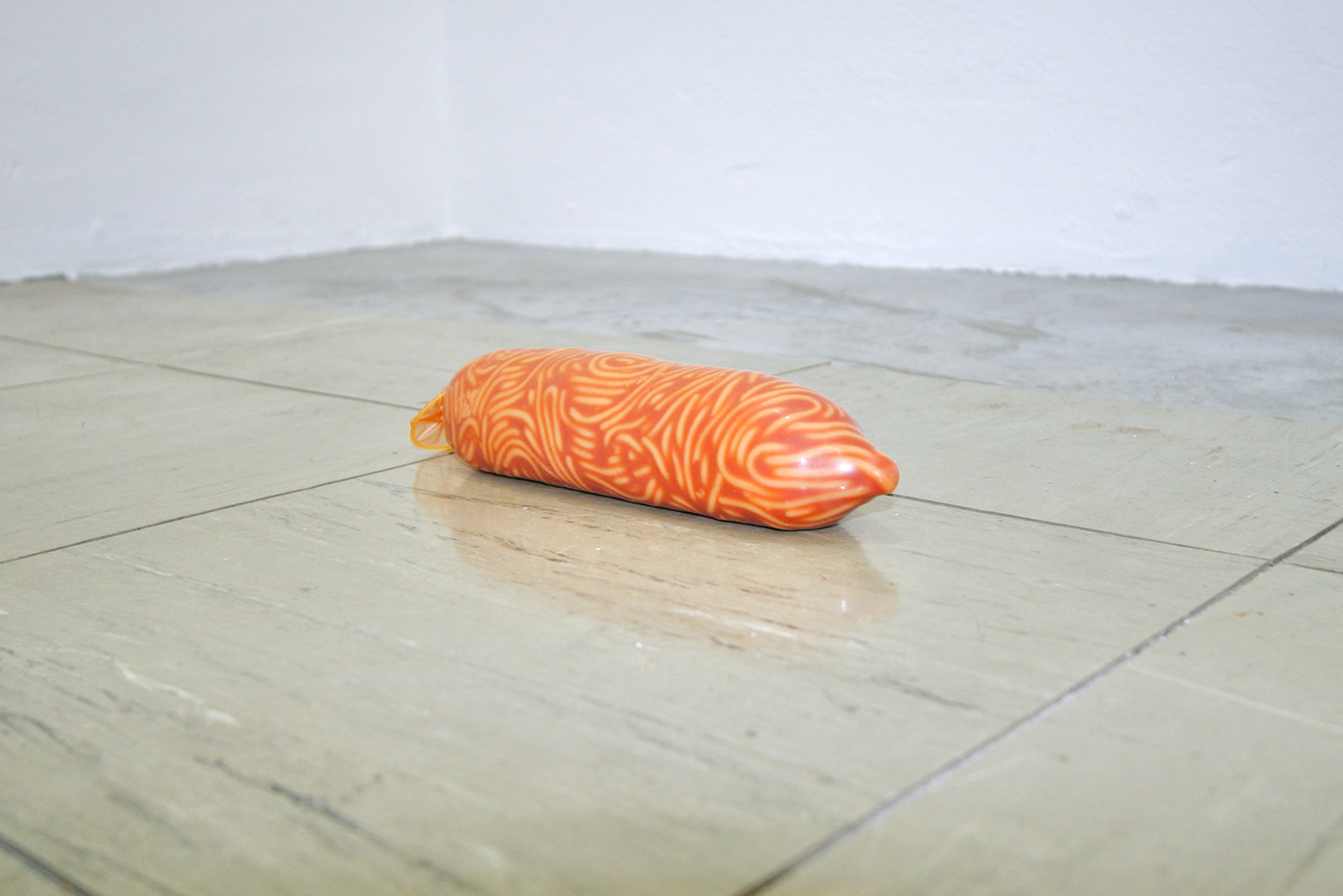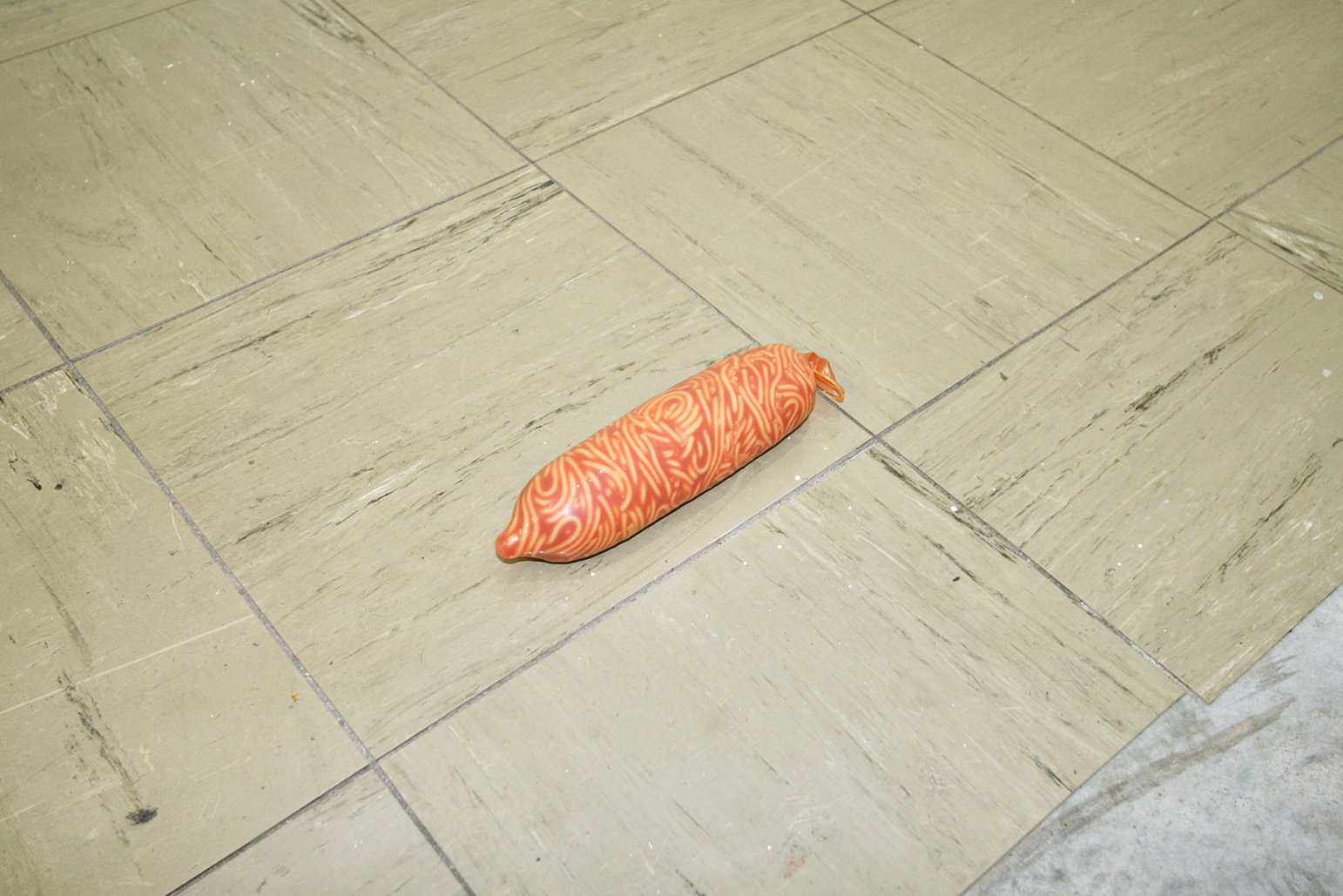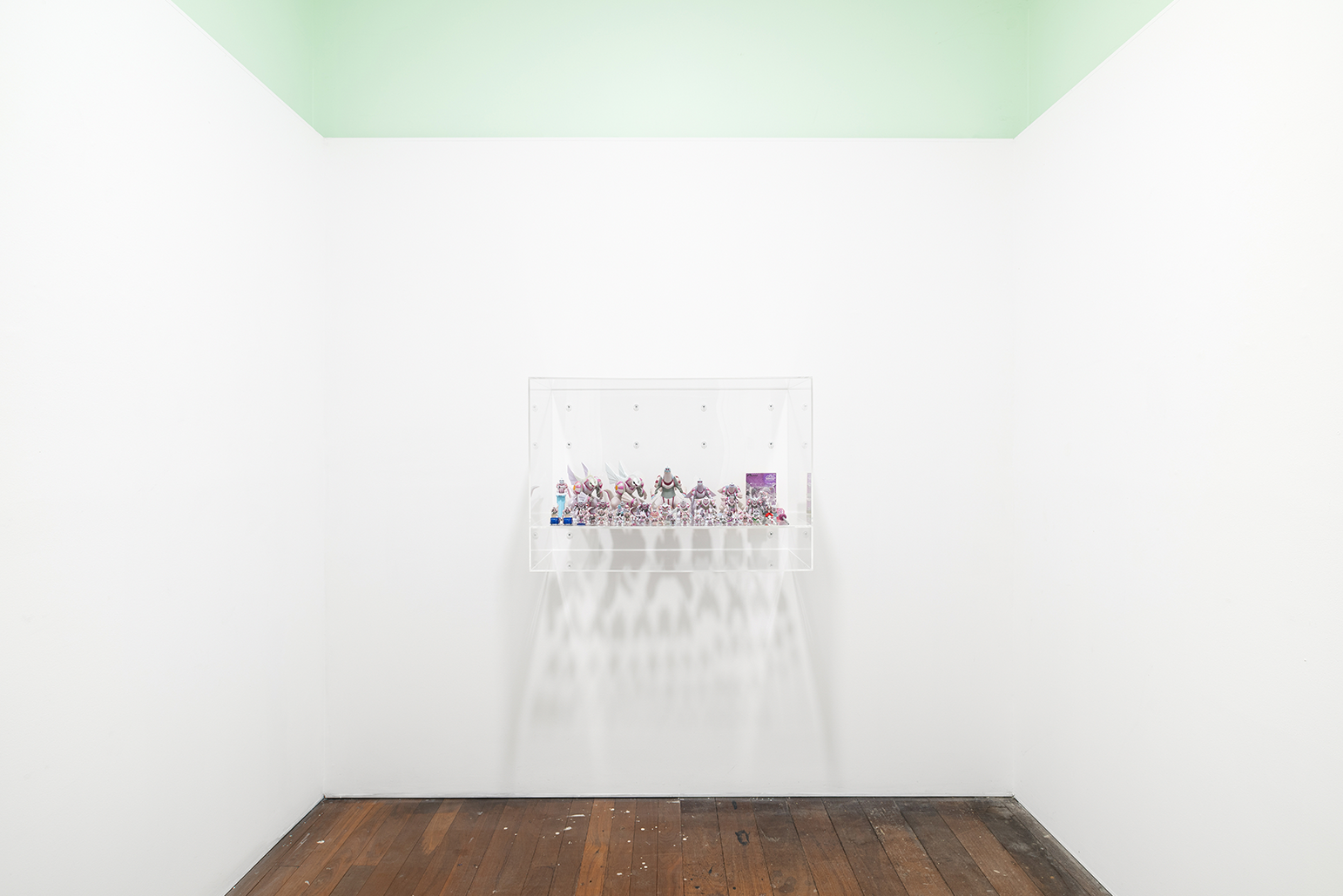



Following Sianne Ngai, a seemingly necessary precondition for engaging with contemporary art is the capacity to make interesting aesthetic judgements.[1] I don’t take Ngai to mean by this the capacity to make statements about art that others would refer to as interesting—not that this is a hindrance—but, instead, the capacity to linger in the aesthetic zone of the interesting—to embrace, if not endure, a state of being merely interested in an artwork. More specifically, the aesthetic judgement of the interesting refers to the ability to attribute to an artwork an inarticulable aesthetic value—something that is difficult if not impossible to put into words now—but one that likely would be articulated in the future if the right conditions emerged. To be interested, then, is to be able to look at an artwork—a boring, baffling, or, importantly, even a beautiful artwork—and neither recoil in distaste or frustration, nor overcommit with praise, but instead to be able to acknowledge that there is probably something going on here; “interesting”. As such, the interested subject has their ears pricked for word of a new trend, while being simultaneously guarded against the lurking threat of scams and the indignity of embracing the schmaltziness of the bathetically sincere. Interest, whether financial or aesthetic, is a product of motion after all; stasis is death for the interested party, but this need for movement creates the constant risk of over and underinvestment.
Recent shows linked to the artist and gallerist Matthew Brown—Puppies Puppies (Jade Guanaro Kuriki-Olivo)’s Condom Filled With Spaghetti at Brown’s Bill’s PC space and his own Museum (DP) at Disneyland Paris—suggest aesthetic subjectivities less commonly associated with the artworld (and its concomitant emphasis on the interesting), such as those characterised by overcommitment and obsessive enthusiasm.As the title suggests, Condom Filled with Spaghetti is a recreation, by way of the artist’s instructions, of Puppies Puppies’ restaging of a now infamous Imgur image of a condom filled with spaghetti resting on top of a bed. So famous have Puppies Puppies’ recreations become that it is common for documentation of her artworks to circulate more freely than the initial viral image. For this reason, it is likely that a mass audience is oblivious to the mystery surrounding the original image, or the fact that it has been artistically recreated. Instead, hundreds of thousands, if not millions, may only be familiar with the fact that pasta and polyisoprene are regularly combined on the internet.
Museum (DP) showcases a collection of Pokémon memorabilia recently purchased by Brown and previously owned by the Pokémon collector md11_er. According to the exhibition’s accompanying text, md11_er had only recently decided to sell part of his extensive Pokémon collection in order to fund and create physical space for their burgeoning model aircraft collection. The Pokémon in question, Dialga and Palkia, are, according to the franchise’s lore, divine entities that embody the abstract notions of time and space. In multiple senses, then, Brown draws our attention to the time and space of collecting, the temporal demands associated with meticulously researching, obtaining, maintaining, and displaying objects, and the spatial demands of housing a collection alongside the opportunity cost of not using the space for something more productive—a cost that must be justified, whether to the state, to oneself, or to a partner or loved one.
Both shows challenge a contemporary art audience to take seriously the fan as an aesthetic subject, and one that is potentially gaining prominence due to the ongoing pressure faced by contemporary art institutions like the museum, commercial gallery, and art school. While the fan has often been derided in contemporary art discourse for holding a premodern or religious devotion to the commodities of consumer capitalism (one only has to think of the use of “Swifties” to create cringe bait, or the jeering “consoomer” meme that has grown to prominence alongside the cultural dominance of the Marvel Cinematic Universe in order to get a sense of why the fan is still a maligned figure) there are good reasons to take the aesthetic subject of the fan more seriously. As Catherine Grant and Kate Random Love put it in their Fandom as Methodology, perhaps we must become more attuned to the ways in which “artists take up the role of the fan […] and how fandom provides a model for subjective and emotionally driven engagement with contemporary art” insofar as the neoliberal restructuring of contemporary art institutions necessitates reflection on “fandom as a strategy that is not essentially political or oppositional, but a way to open up a conversation about what it means to be an artist or scholar within a university and art-world context that increasingly wants rationalised, monetised outputs”.[2] Indeed, while the pressurised and rationalised environment of the underfunded contemporary art institute incentivises the watchful and uncommitted aesthetic judgement of the merely interesting, the fan has no need to worry about whether their enthusiasm and dedication may turn out to be miscalculated.
Rather than attempts to produce an engaging visual experience, or even anti-art disruptions of the viewer’s association of visual experience and art, the readymade assemblages in Condom Filled With Spaghetti and Museum (DP) could be read as attempts by Puppies Puppies and Brown to physically embody their dedication to a somewhat intangible distributed cultural phenomenon—the original Imgur image and the Pokémon franchise respectively. On this reading, and unlike the merely interested viewer of contemporary art who must cautiously hedge their bets and ask, “what is contemporary art to me?”, the contemporary art fan can be understood as offering the inverse question, “what am I to contemporary art?” Just as a limited edition boxed set, signed poster, band t-shirt, or complete collection signals the fan’s authentic fidelity to a particular piece of culture, these works could be read as similar acts of dedication rather than as commentaries, analyses, or critiques. Put differently, I think it is worthwhile posing the question of whether Brown has purchased part of md11_er’s Pokémon collection in order to turn fan culture into art, or whether Brown has exhibited such a purchase in order to turn art into a kind of fan culture. Similarly, we could read Puppies Puppies’ physical embodiment of the Imgur spaghetti filled condom as providing us with a critical distance from which to better critique the internet’s contribution to the breakdown of symbolic efficacy, or we could read it—and Brown’s recreation of it for a Boorloo audience—as a kind of fan fiction.
This is not to deny that these shows could be read in the more conventional vein as being underpinned by a critical imperative; by the attempt to interrogate culture from the outside. Despite this, it is worthwhile considering the potential freedoms that are offered by the aesthetic subjectivity of the fan to the artist and curator. Indeed, as the institutions of critique are increasingly restructured around, if not completely destroyed by, instrumental imperatives it is worth considering the value of artist and curator as the bearer of unselfconscious enthusiasm.
Puppies Puppies (Jade Guanaro Kuriki-Olivo), Condom Filled With Spaghetti, at Bill’s PC, 6 April - 9 May 2024.
Matthew Brown, Museum (DP), at Disneyland Paris, April 7 - April 27 2024.
Footnotes:
[1] Sianne Ngai. Our Aesthetic Categories: Zany, Cute, Interesting. 2012. Harvard University Press.
[2] Fandom as Methodology: A Sourcebook for Artists and Writers. 2019. Eds. Catherine Grant & Kate Random Love. Goldsmiths Press. P. 3 Goldsmiths, the University that houses the press that published Fandom as Methodology, and that has educated a range of internationally famous artists such as Steve McQueen, Damien Hirst, Damon Albarn, and Sarah Lucas, has announced a major restructuring of its humanities courses that will see around 132FTE staff made redundant.
Image credits: Photographs of Matthew Brown’s Museum (DP) at Disneyland Paris by @artdoc_au.
Recent shows linked to the artist and gallerist Matthew Brown—Puppies Puppies (Jade Guanaro Kuriki-Olivo)’s Condom Filled With Spaghetti at Brown’s Bill’s PC space and his own Museum (DP) at Disneyland Paris—suggest aesthetic subjectivities less commonly associated with the artworld (and its concomitant emphasis on the interesting), such as those characterised by overcommitment and obsessive enthusiasm.As the title suggests, Condom Filled with Spaghetti is a recreation, by way of the artist’s instructions, of Puppies Puppies’ restaging of a now infamous Imgur image of a condom filled with spaghetti resting on top of a bed. So famous have Puppies Puppies’ recreations become that it is common for documentation of her artworks to circulate more freely than the initial viral image. For this reason, it is likely that a mass audience is oblivious to the mystery surrounding the original image, or the fact that it has been artistically recreated. Instead, hundreds of thousands, if not millions, may only be familiar with the fact that pasta and polyisoprene are regularly combined on the internet.
Museum (DP) showcases a collection of Pokémon memorabilia recently purchased by Brown and previously owned by the Pokémon collector md11_er. According to the exhibition’s accompanying text, md11_er had only recently decided to sell part of his extensive Pokémon collection in order to fund and create physical space for their burgeoning model aircraft collection. The Pokémon in question, Dialga and Palkia, are, according to the franchise’s lore, divine entities that embody the abstract notions of time and space. In multiple senses, then, Brown draws our attention to the time and space of collecting, the temporal demands associated with meticulously researching, obtaining, maintaining, and displaying objects, and the spatial demands of housing a collection alongside the opportunity cost of not using the space for something more productive—a cost that must be justified, whether to the state, to oneself, or to a partner or loved one.
Both shows challenge a contemporary art audience to take seriously the fan as an aesthetic subject, and one that is potentially gaining prominence due to the ongoing pressure faced by contemporary art institutions like the museum, commercial gallery, and art school. While the fan has often been derided in contemporary art discourse for holding a premodern or religious devotion to the commodities of consumer capitalism (one only has to think of the use of “Swifties” to create cringe bait, or the jeering “consoomer” meme that has grown to prominence alongside the cultural dominance of the Marvel Cinematic Universe in order to get a sense of why the fan is still a maligned figure) there are good reasons to take the aesthetic subject of the fan more seriously. As Catherine Grant and Kate Random Love put it in their Fandom as Methodology, perhaps we must become more attuned to the ways in which “artists take up the role of the fan […] and how fandom provides a model for subjective and emotionally driven engagement with contemporary art” insofar as the neoliberal restructuring of contemporary art institutions necessitates reflection on “fandom as a strategy that is not essentially political or oppositional, but a way to open up a conversation about what it means to be an artist or scholar within a university and art-world context that increasingly wants rationalised, monetised outputs”.[2] Indeed, while the pressurised and rationalised environment of the underfunded contemporary art institute incentivises the watchful and uncommitted aesthetic judgement of the merely interesting, the fan has no need to worry about whether their enthusiasm and dedication may turn out to be miscalculated.
Rather than attempts to produce an engaging visual experience, or even anti-art disruptions of the viewer’s association of visual experience and art, the readymade assemblages in Condom Filled With Spaghetti and Museum (DP) could be read as attempts by Puppies Puppies and Brown to physically embody their dedication to a somewhat intangible distributed cultural phenomenon—the original Imgur image and the Pokémon franchise respectively. On this reading, and unlike the merely interested viewer of contemporary art who must cautiously hedge their bets and ask, “what is contemporary art to me?”, the contemporary art fan can be understood as offering the inverse question, “what am I to contemporary art?” Just as a limited edition boxed set, signed poster, band t-shirt, or complete collection signals the fan’s authentic fidelity to a particular piece of culture, these works could be read as similar acts of dedication rather than as commentaries, analyses, or critiques. Put differently, I think it is worthwhile posing the question of whether Brown has purchased part of md11_er’s Pokémon collection in order to turn fan culture into art, or whether Brown has exhibited such a purchase in order to turn art into a kind of fan culture. Similarly, we could read Puppies Puppies’ physical embodiment of the Imgur spaghetti filled condom as providing us with a critical distance from which to better critique the internet’s contribution to the breakdown of symbolic efficacy, or we could read it—and Brown’s recreation of it for a Boorloo audience—as a kind of fan fiction.
This is not to deny that these shows could be read in the more conventional vein as being underpinned by a critical imperative; by the attempt to interrogate culture from the outside. Despite this, it is worthwhile considering the potential freedoms that are offered by the aesthetic subjectivity of the fan to the artist and curator. Indeed, as the institutions of critique are increasingly restructured around, if not completely destroyed by, instrumental imperatives it is worth considering the value of artist and curator as the bearer of unselfconscious enthusiasm.
Puppies Puppies (Jade Guanaro Kuriki-Olivo), Condom Filled With Spaghetti, at Bill’s PC, 6 April - 9 May 2024.
Matthew Brown, Museum (DP), at Disneyland Paris, April 7 - April 27 2024.
Footnotes:
[1] Sianne Ngai. Our Aesthetic Categories: Zany, Cute, Interesting. 2012. Harvard University Press.
[2] Fandom as Methodology: A Sourcebook for Artists and Writers. 2019. Eds. Catherine Grant & Kate Random Love. Goldsmiths Press. P. 3 Goldsmiths, the University that houses the press that published Fandom as Methodology, and that has educated a range of internationally famous artists such as Steve McQueen, Damien Hirst, Damon Albarn, and Sarah Lucas, has announced a major restructuring of its humanities courses that will see around 132FTE staff made redundant.
Image credits: Photographs of Matthew Brown’s Museum (DP) at Disneyland Paris by @artdoc_au.
